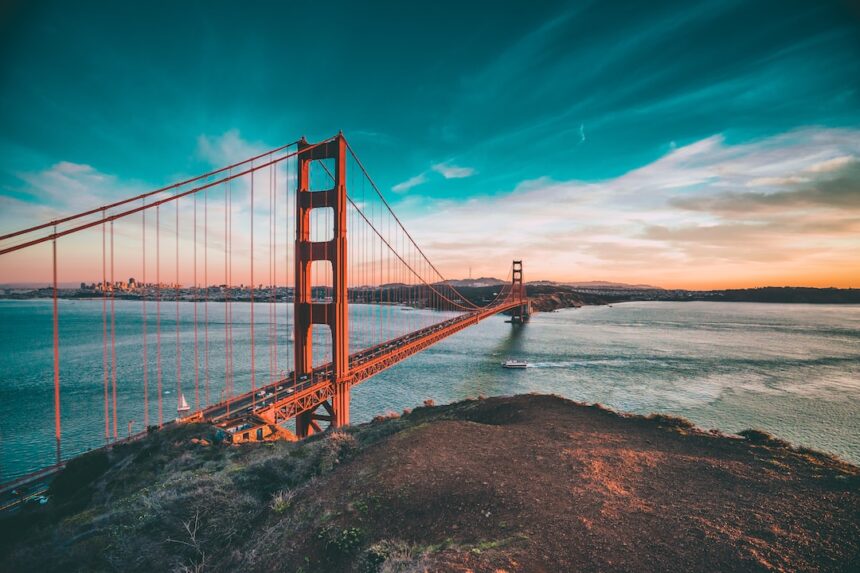As you delve into the world of advanced photo manipulation, it’s essential to grasp the fundamental principles that govern this art form. At its core, photo manipulation is about transforming images to create something new, whether that’s enhancing reality or crafting entirely imaginative scenes. You’ll find that this process requires not only technical skills but also a creative vision.
The ability to see beyond the original image and envision what it could become is what sets advanced photo manipulation apart from basic editing. In your journey, you will encounter various techniques that allow you to alter images in ways that can be both subtle and dramatic. Understanding the nuances of these techniques is crucial.
For instance, you might learn how to blend multiple images seamlessly or how to adjust elements within a single photograph to create a more compelling composition. The beauty of advanced photo manipulation lies in its versatility; it can be used for artistic expression, commercial projects, or even personal storytelling. As you explore this realm, keep an open mind and be willing to experiment with different styles and methods.
Key Takeaways
- Advanced photo manipulation involves complex techniques to create stunning and realistic images.
- Selecting the right tools and software is crucial for achieving professional results in advanced photo manipulation.
- Mastering selection and masking techniques is essential for seamlessly blending elements in advanced photo manipulation.
- Advanced compositing and blending techniques are used to combine multiple images into a cohesive and visually appealing composition.
- Creating realistic lighting and shadows is key to adding depth and dimension to advanced photo manipulation.
Selecting the Right Tools and Software
Choosing the right tools and software is a pivotal step in your photo manipulation journey. With a plethora of options available, it can be overwhelming to determine which ones will best suit your needs. Adobe Photoshop is often regarded as the industry standard for photo manipulation due to its extensive features and capabilities.
Its powerful editing tools, layer management, and vast array of plugins make it an excellent choice for both beginners and seasoned professionals alike. However, you should also consider alternative software that may align better with your specific style or budget. Programs like GIMP, Affinity Photo, and Corel PaintShop Pro offer robust features at varying price points.
Each software has its unique strengths, so take the time to explore their functionalities.
Mastering Selection and Masking Techniques
One of the cornerstones of advanced photo manipulation is mastering selection and masking techniques. These skills allow you to isolate specific elements within an image, enabling you to manipulate them independently from the rest of the composition. You’ll find that precise selections can make or break your project; therefore, investing time in learning how to use tools like the Pen Tool, Quick Selection Tool, and Layer Masks is essential.
As you practice these techniques, pay attention to the edges of your selections. A clean edge can significantly enhance the realism of your final image. You might experiment with feathering your selections or using refine edge options to achieve smoother transitions.
Additionally, understanding how to create complex masks will empower you to blend images seamlessly, allowing for more intricate compositions that tell a story or evoke emotion.
Advanced Compositing and Blending
| Metrics | Value |
|---|---|
| Number of Layers | 10 |
| Blending Modes Used | 5 |
| Composite Operations | 15 |
| Transparency Levels | 20% |
Once you have a solid grasp of selection and masking, you can move on to advanced compositing and blending techniques. This stage involves combining multiple images into a cohesive piece while ensuring that all elements work harmoniously together. You’ll learn how to adjust colors, lighting, and textures so that each component feels like part of a unified whole.
Blending modes play a crucial role in this process. By experimenting with different blending modes in your layers, you can achieve various effects that enhance your composition’s depth and interest. For instance, using the Overlay mode can add contrast and vibrancy, while Soft Light can create a more subtle integration of elements.
As you refine your compositing skills, remember that patience is key; sometimes it takes multiple iterations to achieve the desired effect.
Creating Realistic Lighting and Shadows
Realistic lighting and shadows are vital components of advanced photo manipulation that can dramatically affect the believability of your work. Understanding how light interacts with objects in real life will help you replicate those effects in your compositions. Start by studying the direction of light in your source images and consider how it would realistically cast shadows on different surfaces.
You can create shadows using various techniques, such as painting them in with a soft brush or duplicating and transforming existing elements within your image. Pay attention to the opacity and blur of your shadows; they should mimic natural light behavior. Additionally, consider adding highlights where light would naturally hit an object to enhance its three-dimensionality.
By mastering these techniques, you’ll elevate your work from mere manipulation to stunning visual storytelling.
Advanced Color Grading and Toning
Color grading and toning are essential aspects of advanced photo manipulation that can set the mood and tone of your artwork. The colors you choose can evoke specific emotions or convey particular themes, making this an area worth exploring deeply. You might start by adjusting the overall color balance using tools like Curves or Color Balance adjustments to achieve a desired look.
As you progress, consider diving into more advanced techniques such as split toning or using LUTs (Look-Up Tables) for consistent color grading across multiple images. Experimenting with color harmonies—like complementary or analogous colors—can also add depth to your compositions. Remember that subtlety is often key; sometimes a slight adjustment can have a significant impact on the overall feel of your image.
Working with Textures and Overlays
Incorporating textures and overlays into your photo manipulations can add richness and depth to your work. Textures can create a sense of realism or artistic flair, depending on how you apply them. You might start by sourcing high-quality textures from online resources or creating your own by photographing surfaces like wood, fabric, or stone.
When applying textures, consider using blending modes to integrate them seamlessly into your composition. Adjusting opacity can also help achieve the desired effect without overwhelming the underlying image. Overlays such as light leaks or bokeh effects can further enhance your work by adding visual interest and complexity.
As you experiment with these elements, don’t hesitate to layer multiple textures for a more dynamic result.
Incorporating Special Effects and Filters
Special effects and filters can be powerful tools in your advanced photo manipulation arsenal. They allow you to add unique elements that can transform an ordinary image into something extraordinary. Whether it’s creating a dreamy atmosphere with a Gaussian blur or adding dramatic flair with lens flares, these effects can significantly enhance your compositions.
However, it’s essential to use these effects judiciously; overdoing it can detract from the overall quality of your work. You might find it helpful to create a separate layer for special effects so that you can easily adjust their intensity or remove them if necessary.
By thoughtfully incorporating special effects and filters, you’ll elevate your work while maintaining its integrity.
Advanced Retouching and Image Enhancement
Advanced retouching is another critical aspect of photo manipulation that focuses on refining details within an image. This process goes beyond basic corrections; it involves enhancing features while maintaining a natural appearance. You may find yourself using techniques like frequency separation for skin retouching or dodge and burn methods to sculpt light on subjects.
As you refine your retouching skills, pay attention to the balance between enhancement and realism. It’s easy to fall into the trap of over-editing; therefore, always compare your edits against the original image to ensure that you’re enhancing rather than distorting reality. Additionally, consider how retouching fits into the broader context of your composition—every adjustment should serve a purpose in telling your story.
Creating Surreal and Fantasy Art
Creating surreal and fantasy art through advanced photo manipulation allows you to push the boundaries of reality and explore imaginative concepts. This genre invites you to think outside the box and experiment with unconventional ideas that challenge viewers’ perceptions. You might start by gathering inspiration from various sources—artwork, literature, or even dreams—to fuel your creativity.
In this realm, compositing becomes even more critical as you blend disparate elements into a cohesive narrative. Don’t shy away from using unexpected combinations; surreal art thrives on contrast and surprise. Additionally, consider how color grading and lighting can enhance the dreamlike quality of your work.
By embracing experimentation and allowing your imagination to guide you, you’ll create pieces that captivate and intrigue.
Mastering Advanced Photo Manipulation Workflow
Finally, mastering an efficient workflow is essential for producing high-quality advanced photo manipulations consistently. A well-structured workflow not only saves time but also enhances creativity by allowing you to focus on the artistic aspects rather than getting bogged down by technical issues. Start by organizing your files systematically; create folders for different projects or stages of editing.
As you work through each project, develop a routine that includes initial brainstorming, sketching ideas (even if just mentally), executing selections and masks, followed by compositing and adjustments. Regularly saving versions of your work will also help prevent loss due to unforeseen issues while allowing you to revisit earlier stages if needed. By refining your workflow over time, you’ll find yourself producing stunning manipulations more efficiently while enjoying the creative process even more.
In conclusion, advanced photo manipulation is an intricate blend of technical skill and artistic vision that allows you to transform ordinary images into extraordinary works of art. By understanding core principles, selecting appropriate tools, mastering techniques like selection and masking, blending elements seamlessly, creating realistic lighting and shadows, color grading effectively, working with textures and overlays, incorporating special effects judiciously, retouching thoughtfully, exploring surreal concepts creatively, and establishing an efficient workflow—you will elevate your photo manipulation skills significantly. Embrace this journey with curiosity and passion; each project will bring new challenges and opportunities for growth in this captivating field.
In the realm of advanced manipulation techniques, understanding the psychological underpinnings is crucial for both practitioners and those seeking to protect themselves from undue influence. A related article that delves into these psychological aspects can be found on Unplugged Psych’s website. This resource provides valuable insights into the subtle and overt methods used in manipulation, offering readers a comprehensive overview of the tactics employed and the psychological principles behind them. For more detailed information, you can explore the article by visiting this link.
WATCH THIS! 🧠 The 11 Manipulation Tactics That Trap Smart People
FAQs
What are advanced manipulation techniques?
Advanced manipulation techniques refer to a set of advanced skills and methods used to manipulate objects, images, or data in a more complex and sophisticated manner. These techniques are often used in fields such as graphic design, photography, and data analysis.
What are some examples of advanced manipulation techniques?
Examples of advanced manipulation techniques include advanced photo editing using tools like Photoshop, advanced data manipulation using programming languages like Python or R, and advanced graphic design techniques such as 3D modeling and animation.
How can one learn advanced manipulation techniques?
One can learn advanced manipulation techniques through formal education, online courses, tutorials, and practice. Many universities and online platforms offer courses in graphic design, photography, and data analysis that cover advanced manipulation techniques.
What are the benefits of mastering advanced manipulation techniques?
Mastering advanced manipulation techniques can lead to increased creativity, efficiency, and precision in tasks related to graphic design, photography, and data analysis. It can also open up new career opportunities and enhance one’s professional skills.




